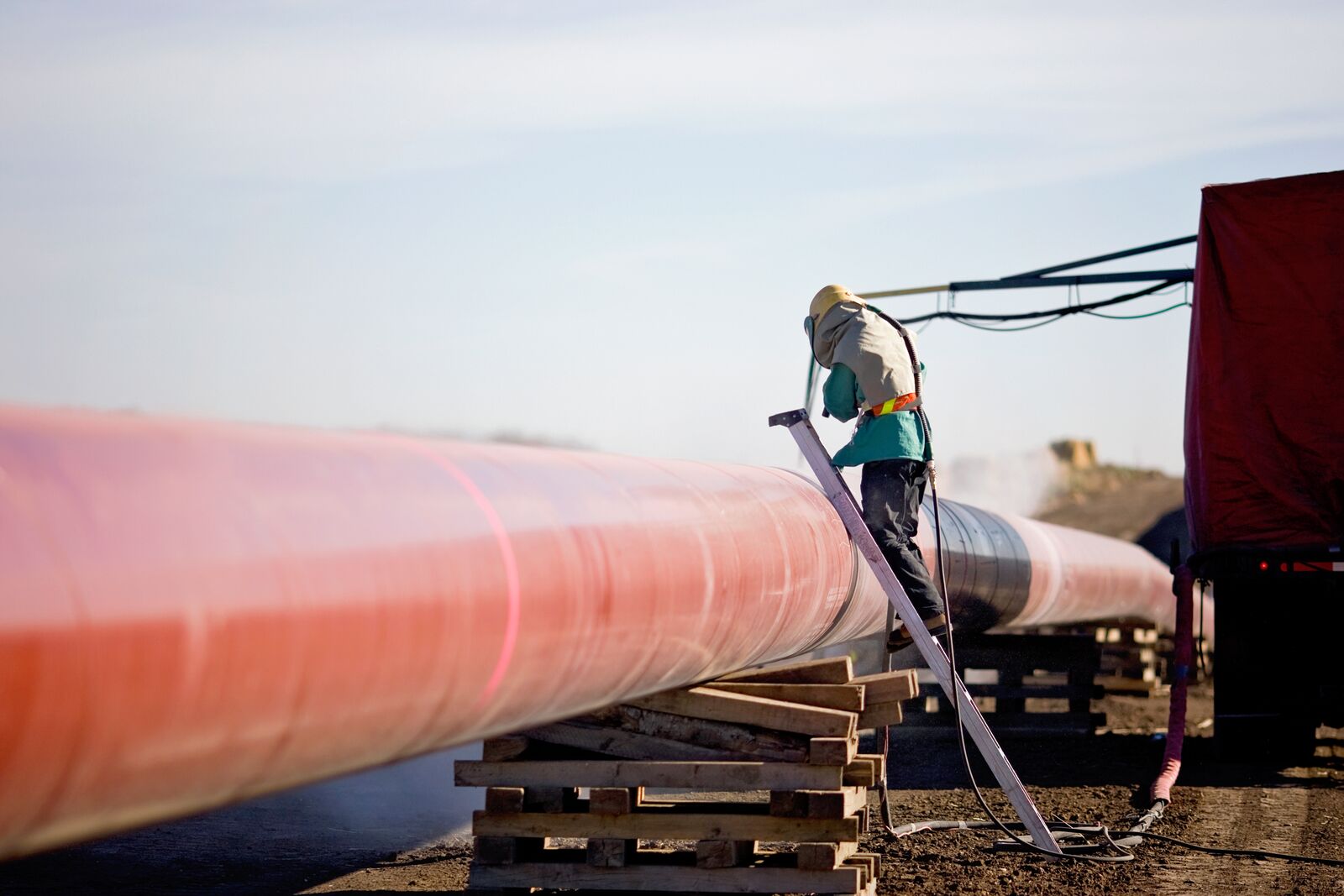Comprehensive Guide to Pipe Welding Assessment: Ensuring Honesty and Safety in Pipe Building And Construction and Maintenance
The stability and safety and security of pipelines are paramount in today's facilities landscape, underscoring the critical function of welding inspection in pipe building and maintenance. A thorough guide on this subject not just highlights the necessity of assessing weld high quality yet likewise addresses the different evaluation strategies available, such as ultrasonic and radiographic testing. By recognizing typical flaws and their implications, stakeholders can carry out ideal methods that ensure compliance and durability. Nonetheless, the complexities entailed in welding evaluation raising pertinent concerns concerning industry requirements and the advancing innovations that may redefine these methods.

Value of Welding Assessment
Welding assessment plays an essential function in making certain the integrity and safety and security of pipeline systems. It functions as a basic process that verifies the top quality and reliability of bonded joints, which are typically one of the most vulnerable points in pipe building and construction. With organized evaluation, assessors can recognize prospective problems such as cracks, porosity, and insufficient combination, which may compromise the architectural honesty of the pipe.
The relevance of welding assessment prolongs beyond plain compliance with industry criteria; it likewise safeguards public health and wellness and the atmosphere. If failings take place, pipes lugging harmful products position substantial threats. Efficient assessment methods assist avoid leakages and tears, alleviating ecological damage and securing neighborhoods. Additionally, extensive assessments can boost the long life of pipeline systems, decreasing the need for pricey repair work and downtime.
Along with guaranteeing safety and security and compliance, welding examination promotes a society of top quality guarantee within organizations. By prioritizing assessment throughout the welding procedure, companies can develop a credibility for integrity and quality, ultimately leading to increased client confidence and business opportunities (Pipeline Welding Inspection). Thus, the importance of welding evaluation can not be overemphasized in the context of pipeline building and construction and upkeep
Trick Welding Procedures
Different welding processes are utilized in pipeline building, each with its own benefits and applications. Amongst the most commonly utilized methods are Shielded Metal Arc Welding (SMAW), Gas Tungsten Arc Welding (GTAW), and Gas Metal Arc Welding (GMAW) SMAW is preferred for its adaptability and ability to execute well in various environmental conditions, making it suitable for area applications.
GTAW, typically referred to as Tungsten Inert Gas (TIG) welding, is identified for its ability to generate top notch welds with superb control over heat input, making it perfect for thin-walled pipelines and stainless-steel materials. GMAW, or Metal Inert Gas (MIG) welding, uses high deposition prices and is effective for large-scale tasks, usually utilized in the manufacture of pipes in controlled atmospheres.
Additionally, Submerged Arc Welding (SAW) is made use of for its deep infiltration and high performance, particularly in the construction of large-diameter pipes. Each of these procedures adds to the total integrity and safety and security of pipeline building and constructions, allowing welders to pick the most proper method based on product kind, task needs, and environmental conditions. Comprehending these vital welding processes is important for efficient pipe welding assessment.
Usual Problems and Their Impact

Porosity, identified by little gas pockets entraped within the weld, deteriorates the product and can cause leakages. Splits, which may occur because of thermal tensions or incorrect cooling, can circulate and result in structural failing under pressure. Damaging, where the base metal is eroded along the weld grain, reduces the effective cross-section of the pipe, increasing the danger of crack.
Incomplete combination occurs when the weld steel does not properly bond with the base metal, leading to weak areas that might stop working under tension. Slag addition, the entrapment of non-metallic material within the weld, can additionally compromise the joint's integrity. Recognizing and dealing with these problems early in the building process is important to guaranteeing the long-lasting reliability and security of pipe systems, consequently safeguarding both the framework and the setting.
Assessment Tools and strategies

Aesthetic assessment is the very first line of protection, permitting examiners to recognize surface irregularities, imbalance, or various other noticeable problems. Ultrasonic screening utilizes high-frequency audio waves to identify inner problems, providing precise deepness measurements and identifying flaws without harming the weld. Radiographic testing utilizes X-rays or gamma rays to generate images of the weld, enabling the recognition of interior voids, cracks, or inclusions.
Magnetic particle testing is particularly efficient for detecting surface and near-surface interruptions in ferromagnetic products. This strategy includes using a magnetic field and great iron bits to the weld, exposing issues through the build-up of bits at flaw sites.
In enhancement to these methods, specialized devices such as automated ultrasonic screening tools and digital link radiography systems enhance inspection precision and performance, making certain a complete examination of pipeline welds throughout building and upkeep.
Ideal Practices for Conformity
Sticking to finest techniques for conformity in pipe welding assessment is crucial for making sure the integrity and safety of the framework. Organizations should establish an extensive top quality management system that lines up with market criteria such as ASME, API, and AWS. This consists of creating detailed welding procedures that define the qualifications, products, and strategies needed for welders.
Normal training and accreditation of examination personnel are important to preserve high expertise levels. Examiners should recognize with different non-destructive testing (NDT) techniques, including ultrasonic testing, radiographic screening, and aesthetic assessment, to properly recognize prospective problems.
Paperwork plays an important function in compliance; preserving accurate documents of assessments, weld treatments, and workers certifications aids to make certain traceability and accountability. Arranged audits and reviews of welding practices need to be conducted to identify areas for renovation and make sure adherence to established methods.
Conclusion
In final thought, the application of rigorous welding inspection protocols is critical for making sure the honesty and security of pipeline construction and upkeep. By determining flaws and employing advanced inspection strategies, organizations can significantly enhance the top quality of bonded joints. Complying with finest methods fosters compliance with sector requirements, inevitably guarding public health and stopping ecological threats. Continual improvement in inspection procedures will certainly add to the longevity and integrity of pipeline systems, highlighting the vital function of welding examination in the industry.
The stability and security of pipelines are critical in today's infrastructure landscape, underscoring the vital function of welding assessment in pipe building and construction and maintenance. Comprehending these crucial welding procedures is vital for reliable pipe welding inspection.
Sticking to ideal practices for conformity in pipeline welding examination is important for making certain the honesty and security of the facilities.In final thought, the application of extensive welding inspection protocols is extremely important for making sure the stability and safety and security of pipeline construction and maintenance. Constant renovation in examination procedures will add to the long life and dependability of pipe systems, underscoring the crucial duty of welding examination in the industry.